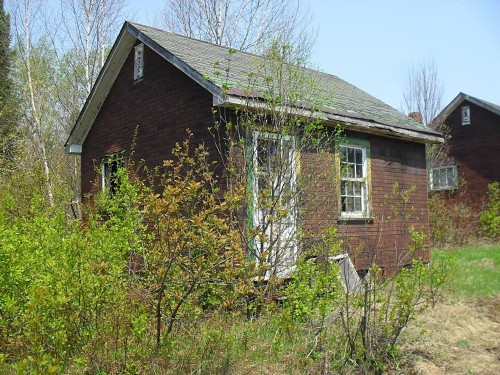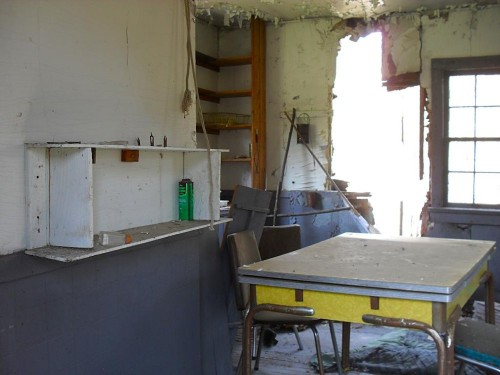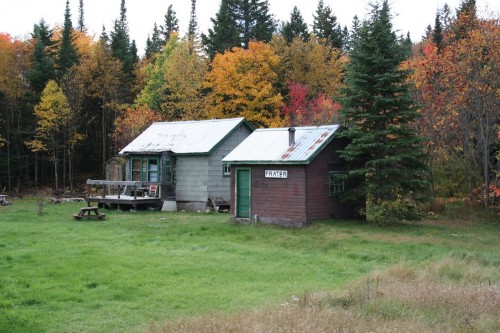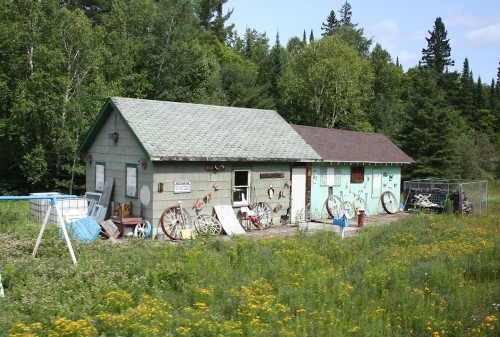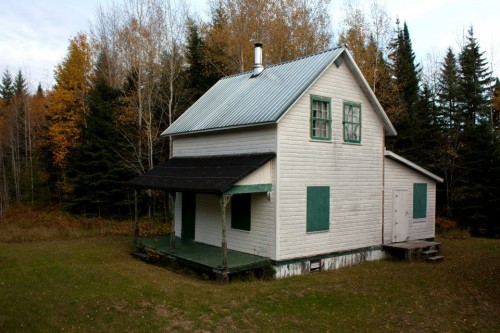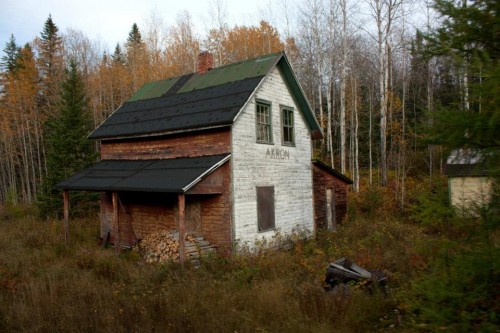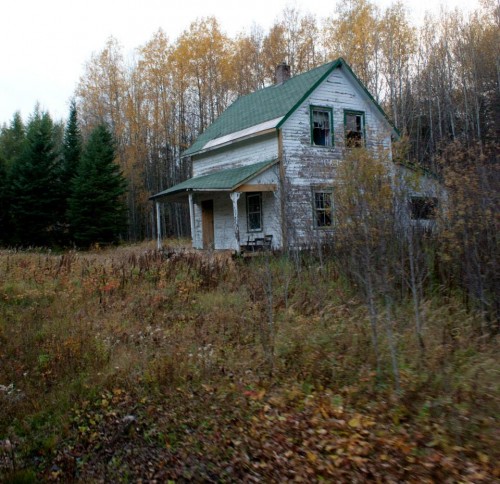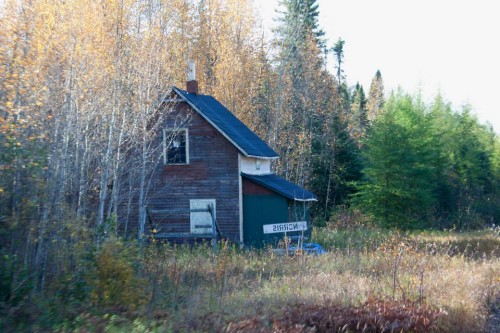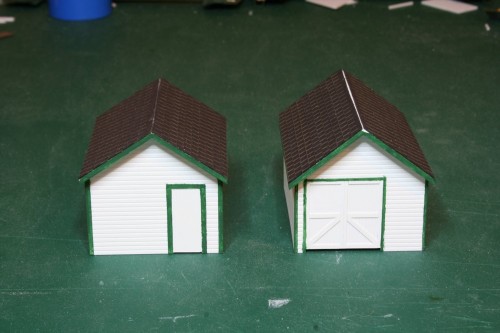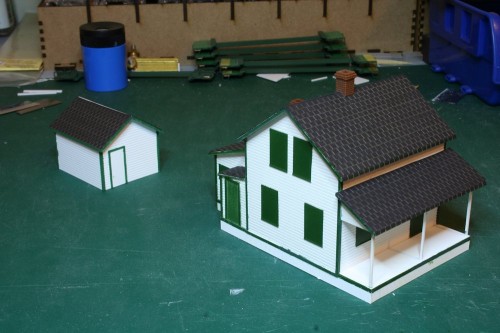As a final follow-up to my previous posts on the ACR’s standard section houses, I wanted to include a highlight on the extra little bunk cabins that were located near by in certain locations to increase bunk capacity for a larger section crew, as the standard section house only had two bedrooms and was generally the home of the section foreman and his family, if he had one. In some remote locations, the main house was all there was, but in many others, there could be a few of these extra bunks for additional personnel.
This pair of one room cabins are located next to the section house at Batchewana. Other cabins at other locations appeared to be quite similar if not the same, although variations are proven to exist.
These shots give a good view of the interior of one of these cabins, and also their current abandoned nature. Check out the massive hole in the back wall.
This cabin at Canyon has been rebuilt with new windows and siding to match some of the other structures at the park but otherwise appears to be a mirror image of the cabins at Batchewana. I’ve found a few 1960s era photos that while not showing a full view of this cabin, do show that it was then present and at the time it was clad in “insul-brick” asphalt shingle siding like the Batchewana cabins.
These cabins at Frater appear to be a variation. Neither is quite the same as the Batchewana or Canyon cabins. Looks like the new owner has upgraded the larger cabin with a home-made bay window, probably using materials scavanged from the old station when it was torn down. The siding on this building, which appears to be asbestos shingles, could also be found on some other ACR structures including several stations such as Frater, Goudreau, Mosher, and Wawa and similar other small structures.

Bunk cabin near Perry, September 2013. May have been a private cabin for a time, but looks abandoned now. My photo.
This little cabin at Perry seems to be quite similar to the cabin at Frater, but mirror imaged. The side alongside the rails has obviously been modified and had its siding replaced, but the original siding is still on both gable ends. This structure is currently located a little ways down from the main complex of structures around the old section house, but definitely has the look of an ACR structure. It may have been moved.
Another cabin at Mekatina, almost identical to the one at Perry (other than the bit to the right that appears to have been added on later). A second similar structure is just out of frame to the right. Mekatina once also boasted a train order office (closed and torn down, but the concrete foundations remain) and one of the standard section houses, but the main section house burned down in the late 1970s.


